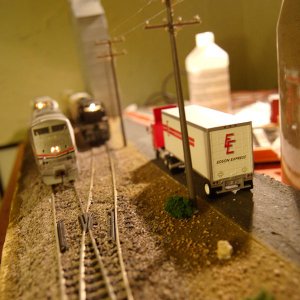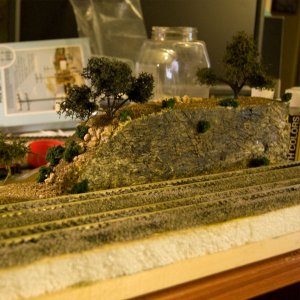Pretty nice pictures and modeling for a beginner, Kevin. Are you making small dioramas or are these part of your main layout?
As for flex track, it's really easy to make curves that are too sharp if you don't know what radius curve you need. For example, larger six wheel truck engines need a minimum of 22" radius curves to run reliably. Without a radius tool, it's hard to tell what size curve you are making by eye. The easiest curve radius tool is a yardstick. Just put a nail in the end so it can swing freely on the layout surface. Drill holes at 22", 24", and 26" big enough for a fine tip magic marker to stick through. You can then swing the yard sticl through a radius with the pen marking the curve. Try for the largest radius curve you can get in your available space.



